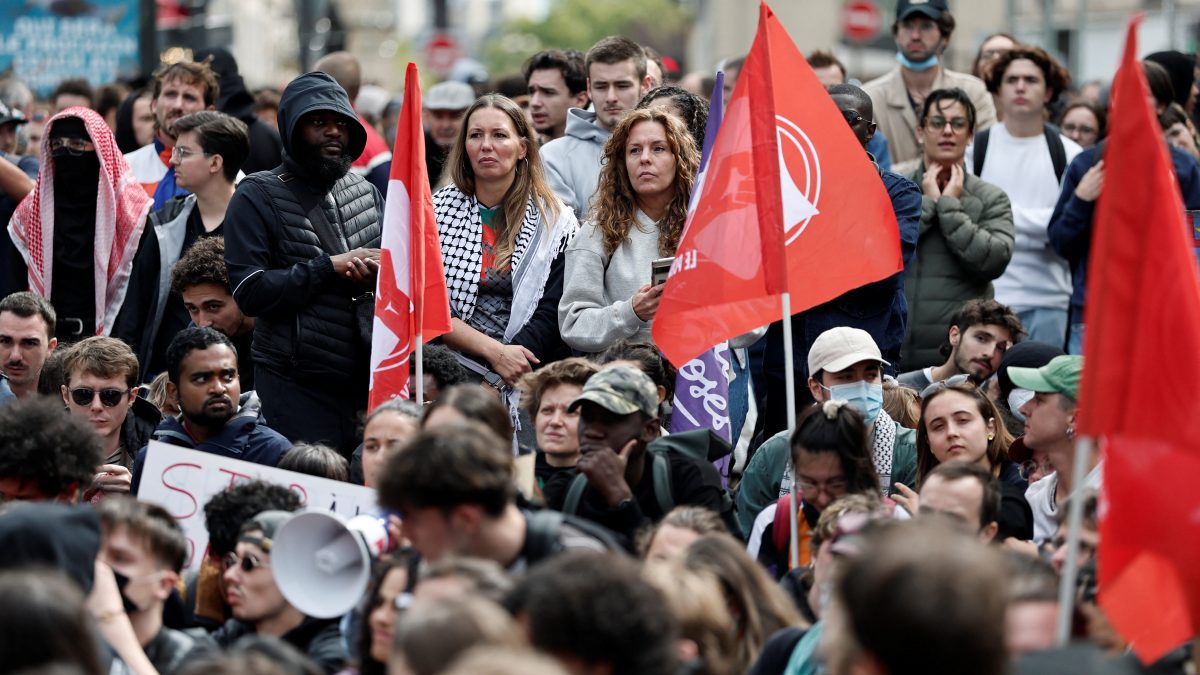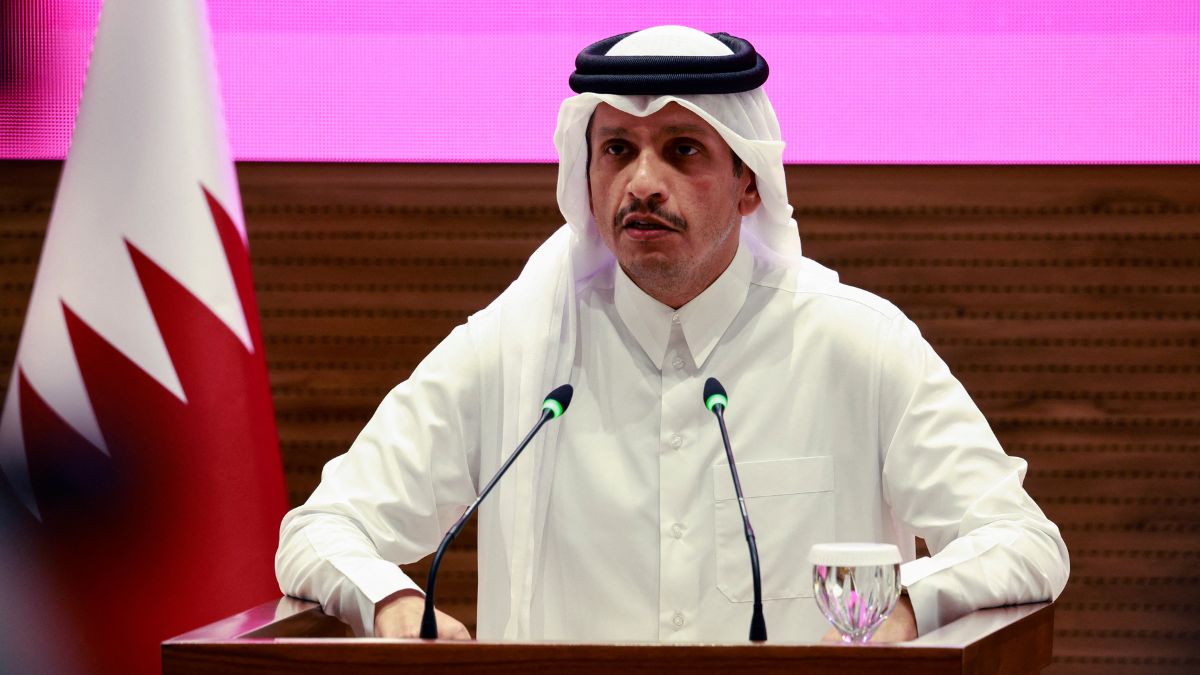France witnessed widespread protest on Wednesday as demonstrators clashed with police, blocked major roads and set fires in cities across the country. Authorities confirmed that over 200 people had been arrested within the first hours of demonstrations organised under the banner of the ‘Block Everything’ movement.
The protests created scenes of chaos in Paris, Nantes, Rennes and several other cities. Eyewitness accounts and videos shared on social media showed barricades set ablaze, garbage bins burning, and security forces dispersing crowds with rounds of tear gas. Interior Minister Bruno Retailleau described the agitation as an attempt to foster “a climate of insurrection”, Reuters reported.
The spark: Political upheaval at the top
The demonstrations took place against a backdrop of political instability. Just two days earlier, Prime Minister François Bayrou had lost a parliamentary confidence vote over his austerity-driven budget proposals. Bayrou, who sought to curb France’s ballooning debt through pension freezes, cuts to public holidays and reduced welfare spending, resigned following the defeat.
On Tuesday, President Emmanuel Macron appointed Sebastien Lecornu, his loyal defence minister, as the new prime minister. This marked the president’s fifth prime ministerial appointment in less than two years.
Macron’s decision was met with fierce criticism from opposition figures, who accused him of ignoring the depth of public discontent. Jean-Luc Melenchon of France Unbowed described the appointment as a provocation, while far-right leader Jordan Bardella argued that Macron’s insistence on retaining allies showed a disregard for voters, according to the Associated Press.
Rise of ‘Block Everything’
The ‘Block Everything’ campaign, known in French as “Bloquons Tout,” emerged earlier this year and quickly gained traction through social media platforms such as TikTok and X. While it initially began among right-wing groups, Reuters noted that it had since been taken over by left and far-left activists, making it a broad, decentralised movement without central leadership.
Analysts observed that its lack of a hierarchical structure made the campaign difficult to predict and harder to suppress. Some calls circulated online encouraged peaceful demonstrations, while others urged more radical action, from blocking highways to boycotting multinational corporations.
The movement’s tactics, including disrupting transportation and withdrawing money from banks, evoked comparisons to the 2018–2019 “Yellow Vest” protests, which also escalated from localised grievances into a broader revolt against Macron’s leadership.
Escalating street clashes
Despite the government’s deployment of an extraordinary 80,000 security personnel across France—including 6,000 in Paris—the protest spread rapidly. In Nantes, demonstrators blocked a highway with burning tires and bins, prompting police to use tear gas to clear the area.
In Montpellier, protesters set up barricades at a roundabout before scuffling with security forces. Fires also broke out in Bordeaux and Toulouse, where train traffic was briefly disrupted.
In Paris, police detained at least 75 people by early morning, but that number rose steadily as the day progressed. Authorities eventually reported close to 200 arrests nationwide by the afternoon, Associated Press reported. Retailleau confirmed that a bus had been set ablaze in Rennes and that damage to a power line had halted train services in the southwest.
Transport and travel chaos
The protests caused significant disruption to travel and daily life. Train and air traffic faced delays, though officials maintained that most metro and high-speed rail services would continue operating. Nonetheless, the RER B line between central Paris and Charles de Gaulle Airport experienced serious interruptions, forcing passengers to seek alternative routes.
Airports in Marseille, Nice, Bastia and Ajaccio were also affected. The Civil Aviation Authority warned passengers to prepare for delays and cancellations, while airline unions called on staff to join the strike actions. Authorities admitted that blockades and ad hoc demonstrations could cause unpredictable delays, even when official transport schedules remained intact, Reuters said.
Macron under pressure
The public protest came at a delicate moment for Macron, who faced accusations from both left and right that his government had lost touch with ordinary citizens. The Socialist Party warned that the president was risking bigger mass mobilisation and institutional paralysis by ignoring demands for change. Melenchon insisted that only Macron’s departure could restore credibility, while Bardella accused the president of clinging to a failing strategy.
Macron defended his choice of Lecornu as prime minister, arguing that his ally’s experience in defence and governance would ensure stability. Lecornu himself pledged to pursue consensus in parliament and prioritixe France’s financial independence.
Yet, political observers doubted whether he would succeed in bridging the widening divide among centrists, leftists and far-right parties in the National Assembly.
Austerity at the heart of discontent
At the centre of the protests lies public anger over austerity measures aimed at reducing France’s €43 billion budget deficit. Bayrou’s proposed cuts struck a nerve with unions and workers, who argued that the measures disproportionately punished low- and middle-income groups while sparing corporations.
One rail union declared online that the fall of the government was “insufficient” because Macron’s administration still appeared committed to austerity-driven reforms.
Union leaders insisted that pension freezes, reductions in welfare and curtailed holidays would erode workers’ rights and deepen inequality. Protesters vowed to continue their resistance regardless of who held the prime minister’s office, framing the demonstrations as a fight against systemic injustice rather than a single policy or politician.
Echoes of past movements
There are striking similarities between the ‘Block Everything’ movement and the ‘Yellow Vest’ protests of 2018, which began as a reaction to fuel price hikes but quickly escalated into a nationwide outcry against inequality and Macron’s reforms.
Like its predecessor, ‘Block Everything’ drew participants from diverse ideological and social backgrounds, uniting students, workers, trade unions and activists under a loosely defined call for change.
Both movements relied heavily on social media to coordinate and both rapidly evolved beyond their initial grievances to demand broader political reforms.
An international dimension
The protests in France coincided with a wave of labour discontent across Europe. London’s Underground workers staged a strike the same day, while staff at Dutch airline KLM also walked out, citing similar grievances over austerity and working conditions.
For France, however, the stakes were especially high, given Macron’s fragile political standing and the recent collapse of his government. The protests highlighted both the vulnerability of his presidency and the broader challenge facing European leaders as they struggle to balance fiscal discipline with social cohesion.
What next: A tough task for Macron
Unions have already warned of further strikes and demonstrations in the coming weeks. Air traffic controllers announced plans for a 24-hour walkout later in September, raising fears of renewed travel chaos. For Macron and Lecornu, the immediate task would be to restore order and build parliamentary support for the budget, but the prospect of prolonged protests loomed large.
With more than 200 arrests, widespread disruption and mounting anger, Wednesday’s protests exposed France’s volatile political climate. Whether Macron can weather this crisis without further alienating voters remains uncertain. For many, the protest has revived memories of previous chapters of social upheaval and the possibility of an extended confrontation between the government and its citizens now seems increasingly likely.
End of Article

)
)
